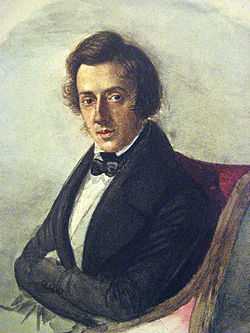Trois nouvelles études

Chopin, 1835
Frédéric Chopin wrote his Trois nouvelles études ("three new studies") for piano in 1839, as a contribution to "Méthode des méthodes de piano", a piano instruction book by Ignaz Moscheles and François-Joseph Fétis. They are often erroneously described as posthumous. In general, these études display little of the technical brilliance of most of the composer's Op. 10 and 25, though they do retain Chopin's original formula for harmonic and structural balance.
The Études
The first of the Trois nouvelles études is an intimate piece in F minor. It develops students' facility with 3-on-4 polyrhythms.
The melody of the second étude in A-flat major sits atop a series of chords in the right hand with a simple bass in the left hand. It develops students' facility with 2-on-3 polyrhythms.
The third and last étude, in D-flat major, is probably the most technically challenging in this collection. It develops independence of voices and articulation in the right hand, with the upper melodic line quite legato over a staccato alto accompaniment. Some of the reaches required between the alto and soprano lines might be difficult for pianists with smaller hands.
|
Trois nouvelles études, No. 1
Trois nouvelles études, No. 1
Performed by Muriel Nguyen Xuan
| |
|
Trois nouvelles études, No. 2
Martha Goldstein playing on an Erard (1851) (2.78 MB)
Trois nouvelles études, No. 2
Performed by Donald Betts. Courtesy of Musopen
| |
|
Trois nouvelles études, No. 3
Martha Goldstein playing on an Erard (1851) (1.87 MB)
|
| Problems playing this file? See media help. | |
External links
|
|---|
| | Opus 10 | |
|---|
| | Opus 25 | |
|---|
| | Trois nouvelles études | |
|---|
| |
|
